Product Overview
Sildenafil
Initially developed for the treatment of pulmonary hypertension, angina, and other cardiovascular conditions, sildenafil citrate was accidentally found to be beneficial in males who suffered from erectile dysfunction (ED). Prior to the discovery of its benefits in treating ED, this condition was considered to be an inevitable part of aging in men or due to underlying psychological causes. After its approval in 1998 by the U.S. Food and Drug Administration for the treatment of ED, the popularity of sildenafil citrate has skyrocketed over the past couple of decades as health care providers generally recommend this medication as the first-line therapy in the management of erectile dysfunction in men. Other contributing factors to its appeal and popularity is that sildenafil citrate can be taken orally on demand, is generally well tolerated, with minimal adverse effects.[1]
Sildenafil citrate is a vasoactive medication belonging to the drug class of phosphodiesterase - 5 enzyme (PDE-5) inhibitors; it is a competitive antagonist of this enzyme. PDE-5 can be found all over the human body especially in the corpus cavernosum within the penis, striated and smooth musculature, as well as in platelets. However, PDE-5 has the largest distribution in the penile corpus cavernosum which is why sildenafil citrate is able to work selectively in this part of the body.[2]
Sildenafil citrate is generally administered orally. However, it can also be administered intravenously or sublingually. Even though its most popular clinical indication for use is in the management of erectile dysfunction, it is also used in the management of pulmonary hypertension, persistent pulmonary hypertension of the newborn, Raynaud’s phenomenon resistant to other vasodilators, as well as in the prevention of pulmonary edema at high altitudes. After oral ingestion, absorption of sildenafil citrate rapidly occurs mainly in the small intestine from where it is then transported in the bloodstream to its area of action. Sildenafil citrate is metabolized in the liver through the action of the hepatic isoenzymes cytochrome P450 3A4 and cytochrome P450 2C9. Following hepatic metabolism, the metabolites are excreted mainly in the stool and, to a lesser degree, in the urine.[2][3][4]
Sildenafil citrate is classified as a pregnancy category B drug by the Food and Drug Administration. Studies have not demonstrated definite risks to fetuses when sildenafil is administered to pregnant mothers. At present, there are no definite clinical indications that warrant the administration of sildenafil citrate in women. Studies done till date have not indicated that sildenafil citrate has comparable benefits in women as they do in men. There are other studies that are still ongoing, however, and their outcomes may provide further insight regarding the utility and benefits of sildenafil in women.
Testosterone
Testosterone is the primary androgen found in the body. Endogenous testosterone is synthesized by cells in the testis, ovary, and adrenal cortex. Therapeutically, testosterone is used in the management of hypogonadism, either congenital or acquired. Testosterone is also the most effective exogenous androgen for the palliative treatment of carcinoma of the breast in postmenopausal women. Testosterone was in use in 1938 and approved by the FDA in 1939. Anabolic steroids, derivatives of testosterone, have been used illicitly and are now controlled substances. Testosterone, like many anabolic steroids, was classified as a controlled substance in 1991. Developed in the United States by Uniumed Pharmaceuticals as AndroGel, testosterone cream was FDA approved in 2000 for the treatment of testosterone deficiency, which often results in a variety of hypogonadic conditions from mood and energy to sexual dysfunctions, as well as a treatment for several injury-related conditions like those experienced by severe burn and accident victims. A very popular form of testosterone, AndroGel is sold around the world under a couple of less popular brand/trade names most notably Testogel (manufactured in the UK by Laboratoires Besins and distributed by Bayer), Testim (manufactured in the U.S. by Auxilium Pharmaceuticals, Inc.), and various generic versions often sold under the name testosterone cream or gel.
The transdermal delivery system of testosterone cream targets the same, or at least very similar bodily regions as injections and other forms of testosterone. More specifically, maximum absorption of testosterone cream is achieved when (as with injectable testosterone) it’s administered to densely muscled bodily regions. Since greater amounts of muscle at the point of application equates to a higher number of testosterone absorbing capillaries, testosterone can be more rapidly shuttled into the bloodstream.[5]
Sildenafil
Sildenafil plays an indirect role in causing penile erection in men suffering from erectile dysfunction. In normal penile erection, sexual stimulation leads to the activation of the non-adrenergic as well as non-cholinergic nerves in the pelvic parasympathetic plexus. Following the activation of these nerves, the neurotransmitter nitric oxide is then released which then transverses the neuromuscular junction of the smooth muscle of the corpus cavernosum and the penile arteries. Nitric oxide then causes an increase in the production of the intracellular second messenger cyclic guanosine monophosphate (cGMP), which is a cyclic nucleotide derived from guanosine triphosphate (GTP). The release of cGMP leads to an increase in blood flow within the penile arteries as well as the relaxation of the smooth muscles of the corpus cavernosum, thereby resulting in penile erection. Penile detumescence is caused by the release of the phosphodiesterase-5 enzyme, which breaks down cGMP and, therefore leads to the contraction of the penile arteries and the corpus cavernosal smooth muscles.
Sildenafil has a chemical structure that is very similar to cGMP and binds competitively to phosphodiesterase-5 enzyme. By binding to the receptors on PDE-5, sildenafil prevents PDE-5 from binding to and degrading cGMP. This competitive antagonist action of sildenafil allows the actions of cGMP in the penile arteries and corpus cavernosum to be prolonged, resulting in the prolongation of penile erection.[2][4][7]
In addition to its location in the penile corpus cavernosum, the phosphodiesterase-5 is also located in large amounts within the pulmonary vasculature. In the lungs, PDE-5 breaks down cGMP, similar to its actions in the corpus cavernosum. Sildenafil also acts as a competitive antagonist to PDE-5 in the pulmonary vasculature preventing the breakdown of cGMP. This has the effect of causing a reduction in pulmonary vascular resistance as well as the mean pulmonary artery pressure. Due to this effect on the pulmonary vasculature, sildenafil has been proposed as an adjunct medication in the treatment of primary pulmonary hypertension, a disease of childhood with a typically poor prognosis. However, studies as to its efficacy in the management of this disorder are still ongoing.[2]
Testosterone
Endogenous testosterone is responsible for sexual maturation at all stages of development throughout life. Synthetically, it is prepared from cholesterol. The function of androgens in male development begins in the fetus, is crucial during puberty, and continues to play an important role in the adult male. Women also secrete small amounts of testosterone from the ovaries. The secretion of androgens from the adrenal cortex is insufficient to maintain male sexuality.
Increased androgen plasma concentrations suppress gonadotropin-releasing hormone (reducing endogenous testosterone), luteinizing hormone, and follicle-stimulating hormone by a negative-feedback mechanism. Testosterone also affects the formation of erythropoietin, the balance of calcium, and blood glucose. Androgens have a high lipid solubility, enabling them to rapidly enter cells of target tissues. Within the cells, testosterone undergoes enzymatic conversion to 5-alpha-dihydrotestosterone and forms a loosely bound complex with cystolic receptors. Androgen action arises from the initiation of transcription and cellular changes in the nucleus brought about by this steroid-receptor complex.
Normally, endogenous androgens stimulate RNA polymerase, resulting in an increased protein production.These proteins are responsible for normal male sexual development, including the growth and maturation of the prostate, seminal vesicle, penis, and scrotum. During puberty, androgens cause a sudden increase in growth and development of muscle, with redistribution of body fat. Changes also take place in the larynx and vocal cords, deepening the voice. Puberty is completed with beard development and growth of body hair. Fusion of the epiphyses and termination of growth is also governed by the androgens, as is the maintenance of spermatogenesis. When endogenous androgens are unavailable, use of exogenous androgens are necessary for normal male growth and development.
Sildenafil
There are certain conditions under which sildenafil citrate should be administered with caution or outright avoided. Some of these conditions are:
Hypersensitivity: Sildenafil is absolutely contraindicated in individuals who have a demonstrated hypersensitivity to the drug or any of its components.[9]
Nitrate therapy: Individuals who are not nitrate therapy should not be administered sildenafil citrate. Nitrates are potent vasodilators typically used in the management of cardiac conditions such as angina pectoris. Since sildenafil also a vasodilatory effect through its actions on cGMP, it can potentiate the effects of nitrates when used concurrently which may result in severe hypotension, syncope, and myocardial infarction.[9]
Hepatic disease: Since sildenafil is metabolized by hepatic isozymes, hepatic diseases may lead to increased plasma levels of sildenafil and a prolongation of its effects. Care should be exercised when administering sildenafil to individuals with hepatic disease.[9]
Renal disease: Similar to hepatic diseases, renal diseases may prolong the effects of sildenafil citrate due to increased plasma levels as a result of diminished renal excretion. Caution should also be exercised when administering sildenafil to individuals with renal diseases.[9]
Visual abnormalities: There have been some instances of vision loss in individuals taking sildenafil citrate. The loss of vision is due to a reduction in blood flow to the optic nerve, a condition known as non-arteritic anterior ischemic optic neuropathy (NAION). Individuals with pre-existing visual disturbances may be administered sildenafil only when the benefits clearly outweigh the risks.[9][12]
Cardiovascular disorders: Caution should be exercised when administering sildenafil to individuals with known cardiac disorders such as arrhythmias, aortic stenosis, heart failure, and myocardial infarction, among others.[9]
Testosterone
Your health care provider needs to know if you have any of these conditions: breast cancer; breathing problems while sleeping; diabetes; heart disease; if a female partner is pregnant or trying to get pregnant; kidney disease; liver disease; lung disease; prostate cancer, enlargement; any unusual or allergic reactions to testosterone or other products; pregnant or trying to get pregnant; breast-feeding. Your healthcare provider will need to have regular bloodwork drawn while on testosterone. This medication is banned from use in athletes by most athletic organizations.
Topical gels and solutions are typically flammable, therefore exposure to fire, flame, and tobacco smoking should be avoided while using any topical gel or solution formulation of testosterone.
Testosterone can stimulate the growth of cancerous tissue and is contraindicated in male patients with prostate cancer or breast cancer. Patients with prostatic hypertrophy should be treated with caution because androgen therapy may cause a worsening of the signs and symptoms of benign prostatic hypertrophy and may increase the risk for development of malignancy. Elderly patients and other patients with clinical or demographic characteristics that are recognized to be associated with an increased risk of prostate cancer should be evaluated for the presence of prostate cancer prior to initiation of testosterone replacement therapy. In patients receiving testosterone therapy, surveillance for prostate cancer should be consistent with current practices for eugonadal men. Testosterone replacement is not indicated in geriatric patients who have age-related hypogonadism only or andropause because there is insufficient safety and efficacy information to support such use.[13] Additionally, the efficacy and long-term safety of testosterone topical solution in patients over 65 years of age has not been determined due to an insufficient number of geriatric patients involved in controlled trials.[14] According to the Beers Criteria, testosterone is considered a potentially inappropriate medication (PIM) for use in geriatric patients and should be avoided due to the potential for cardiac problems and its contraindication in prostate cancer. The Beers expert panel considers use for moderate to severe hypogonadism to be acceptable.[15]
Because of reduced drug clearance and an increased risk of drug accumulation, patients with hepatic disease or hepatic dysfunction should be prescribed testosterone with caution. In addition, edema secondary to water and sodium retention may occur during treatment with androgens. Use testosterone with caution in patients with hepatic disease; renal disease, including nephritis and nephrosis; preexisting edema; or cardiac disease, including heart failure, coronary artery disease, and myocardial infarction (MI), as fluid retention may aggravate these conditions. Further, the possible association between testosterone use and the increased risk of severe cardiovascular events, irrespective of pre-existing cardiac disease, is currently under investigation. An observational study in the U.S. Veteran Affairs health system included adult male patients of an average age of 60 years. Patients (n = 8709) undergoing coronary angiography with a recorded low serum testosterone concentration of < 300 ng/dl were included in the retrospective analysis. Within the larger cohort, testosterone therapy was initiated in 1223 males after a median of 531 days following coronary angiography; 7486 males did not receive testosterone therapy. Three years after coronary angiography, 25.7% of patients receiving testosterone therapy compared to 19.9% of patients not receiving therapy suffered a severe and/or fatal cardiovascular event (MI, stroke, death).[16] A second observational study, investigated the incidence of acute non-fatal MI following an initial testosterone prescription in both younger (<= 55 years) and older (>= 65 years) adult males (n = 55,593). The incidence rate of MI occurring within 90 days following the initial testosterone prescription was compared to the incidence rate of MI occurring in the one year leading-up to the first prescription. Among older males, a 2-fold increase in the risk of MI was observed within the 90 day window; among younger males with a pre-existing history of cardiac disease, a 2- to 3-fold increased risk of MI was observed. In contrast, no increased risk was observed in younger males without a history of cardiac disease.[17] In light of these findings, the FDA announced in early 2014 an examination into the possible link between testosterone therapy and severe cardiovascular events. The FDA has NOT concluded that FDA-approved testosterone treatment increases the risk of stroke, MI, or death. However, health care professionals are urged to carefully consider whether the benefits of treatment are likely to exceed the potential risks. The FDA will communicate their final conclusions and recommendations when the evaluation is complete.[18]
The treatment of hypogonadal men with testosterone esters may potentiate sleep apnea, especially in patients that have risk factors for apnea such as obesity or chronic pulmonary disease. In addition, the safety and efficacy of testosterone topical solution and intranasal gel in obese males with BMI > 35 kg/m2 has not been established.[14][19]
Patients receiving high doses of testosterone are at risk for polycythemia. Periodically, patients receiving testosterone should have their hemoglobin and hematocrit concentrations measured to detect polycythemia.
Testosterone is contraindicated during pregnancy because of probable adverse effects on the fetus (FDA pregnancy risk category X). Women of childbearing potential who are receiving testosterone treatments should utilize adequate contraception. Because testosterone is not used during pregnancy, there should be no particular reason to administer the products to women during labor or obstetric delivery; safety and efficacy in these settings have not been established.[14]
Testosterone is specifically contraindicated in females; the drug is for males only; the dosage form supplies testosterone in excess of what should be prescribed to females under certain endocrine situations.[20] In addition, Androgel, Androderm, Aveed, Fortesta, and Striant brand products are not indicated for use in females due to lack of controlled evaluations and/or the potential for virilizing effects.[21][22][23][24][25] Female patients receiving other forms of testosterone therapy should be closely monitored for signs of virilization (deepening of the voice, hirsutism, acne, clitoromegaly, and menstrual irregularities). At high doses, virilization is common and is not prevented by concomitant use of estrogens. Some virilization may be judged to be acceptable during treatment for breast carcinoma; however, if mild virilism is evident, discontinuation of drug therapy is necessary to prevent long term virilization.[13] Females should be aware that accidental exposure to some testosterone dosage forms (i.e., ointments, solutions, and gels) may occur if they come into direct contact with a treated patient. In clinical studies, within 2-12 hours of gel application by male subjects, 15-minute sessions of vigorous skin-to-skin contact with a female partner resulted in serum female testosterone levels > 2 times the female baseline values. When clothing covered the treated site on the male, the transfer of testosterone to the female was avoided. Accidental exposure to topical testosterone gel has also occurred in pediatric patients after contact between the child and the application site in treated individuals. The adverse events reported include genitalia enlargement, development of pubic hair, advanced bone age, increased libido, and aggressive behavior. Symptoms resolved in most patients when exposure to the product stopped. However, in a few patients, the genitalia enlargement and advanced bone age did not fully return to expected measurements. The FDA recommends taking precautions to minimize the potential for accidental exposure of topical testosterone products by washing hands with soap and warm water after each application, covering application site with clothing, and removing medication with soap and water when contact with another person is anticipated.
In the case of direct skin-to-skin contact with the site of testosterone application, the non-treated person should wash the area with soap and water as soon as possible.[14]
Testosterone topical solution, transdermal patches, and gels are contraindicated in lactating women who are breast-feeding.[14][21] It is recommended that other testosterone formulations be avoided during breast-feeding as well.[26][13] Testosterone distribution into breast milk has not been determined; it is unclear if exposure would increase above levels normally found in human milk. Significant exposure to this androgen via breast-feeding may have adverse androgenic effects on the infant and the drug may also interfere with proper establishment of lactation in the mother.[27] Historically, testosterone/androgens have been used adjunctively for lactation suppression.[27] Alternative methods to breast-feeding are recommended in lactating women receiving testosterone therapy.
Androgen therapy, such as testosterone, can result in loss of diabetic control and should be used with caution in patients with diabetes mellitus. Close monitoring of blood glucose is recommended.
Testosterone has induced osteolysis and should be used with caution in patients with hypercalcemia, which can be exacerbated in patients with metastatic breast cancer.
Administration of testosterone undecanoate has been associated with cases of serious pulmonary oil microembolism (POME) reactions as well anaphylactoid reactions. Reported cases of POME reactions occurred during or immediately after a 1000 mg intramuscular injection of testosterone undecanoate. Symptoms included: cough, urge to cough, dyspnea, hyperhidrosis, throat tightening, chest pain, dizziness, and syncope. Most cases lasted a few minutes and resolved with supportive measures; however, some lasted up to several hours, and some required emergency care and/or hospitalization. When administering testosterone undecanoate, clinicians should take care to inject deeply into the gluteal muscle, avoiding intravascular injection. In addition to POME reactions, episodes of anaphylaxis, including life-threatening reactions, have also been reported following the intramuscular injection of testosterone undecanoate. Patients with suspected hypersensitivity reactions should not be retreated with testosterone undecanoate. After every administration, monitor patient for 30 minutes and provide appropriate medical treatment in the event of serious POME or anaphylactoid reactions. Due to the risk of serious POME and anaphylaxis reactions, testosterone undecanoate (Aveed) is only available through a restricted program called the Aveed REMS Program. Clinicians wanting to prescribe Aveed, must be certified with the REMS Program for purposes of ordering or dispensing the product. Healthcare settings must also be certified with the REMS Program and must have the resources to provide emergency medical treatment in cases of serious POME and anaphylaxis. Further information is available at www.AveedREMS.com or call 1-855-755-0494.[25]
Intranasal formulations of testosterone (e.g., Natesto) are not recommended for individuals with a history of nasal disorders such as nasal polyps; nasal septal perforation; nasal surgery; nasal trauma resulting in nasal fracture within the previous 6 months or nasal fracture that caused a deviated anterior nasal septum; sinus surgery or sinus disease. In addition, the safety and efficacy of intranasal testosterone has not been evaluated in individuals with mucosal inflammatory disorders such as Sjogren’s syndrome. Patients with rhinorrhea (rhinitis) who are receiving intranasal formulations of testosterone may experience decreased medication absorption secondary to nasal discharge. These patients may experience a blunted or impeded response to the intranasal medication. In clinical evaluation, serum total testosterone concentrations were decreased by 21-24% in males with symptomatic allergic rhinitis, whether treated with nasal decongestants or left untreated. Treatment with intranasal testosterone should be delayed until symptoms resolve in patients with nasal congestion, allergic rhinitis, or upper respiratory infection. If severe rhinitis symptoms persist, an alternative testosterone replacement therapy is advised.[19]
The safety and efficacy of testosterone topical products Androgel, Axiron, Fortesta, and Testim as well as Striant buccal tablets, Natesto intranasal gel, and Aveed injectable testosterone undecenoate have not been established in neonates, infants, children, and adolescents < 18 years old.[22][14][28][23][24][25][19] In addition, the safety and efficacy Depo-Testosterone injection has not be established in children < 12 years, and Androdem patches have not been evaluated in pediatric patients < 15 years.[26][21] Generally, the use of testosterone in children should be undertaken only with extreme caution. Testosterone may accelerate bone maturation without stimulating compensatory linear growth, sometimes resulting in compromised adult stature. If testosterone is administered to prepubertal males, radiographic examinations of the hand and wrist should be performed every 6 months to assess the rate of bone maturation and the effect of the drug on epiphyseal centers. Once the epiphyses have closed, growth is terminated. Even after discontinuation of treatment, epiphyseal closure can be enhanced for several months. Accidental exposure to topical testosterone gel has also occurred in pediatric patients after skin to skin contact between the child and the application site in treated individuals. The adverse events reported include genitalia enlargement, development of pubic hair, advanced bone age, increased libido, and aggressive behavior. Symptoms resolved in most patients when exposure to the product stopped. However, in a few patients, the genitalia enlargement and advanced bone age did not fully return to expected measurements. The FDA recommends taking precautions to minimize the potential for accidental exposure by washing hands with soap and warm water after each application, covering application site with clothing, and removing medication with soap and water when contact with another person is anticipated. In the case of direct skin-to-skin contact with the site of testosterone application, the non-treated person should wash the area with soap and water as soon as possible.
Sildenafil
Toxicity is one of the adverse effects that may be experienced in individuals on sildenafil therapy. The risk of developing toxic effects is especially higher in the presence of hepatic or renal disease, or in individuals on concurrent nitrate therapy. The toxic effects typically present as visual or cardiovascular disturbances. Other adverse reactions that may occur while on sildenafil therapy are tendon rupture, exfoliative dermatitis, hearing loss, seizures, and gastritis, among others.
Testosterone
Possible interactions include: certain medicines for diabetes; certain medicines that treat or prevent blood clots like warfarin; oxyphenbutazone; propranolol; steroid medicines like prednisone or cortisone. This list may not describe all possible interactions.
NOTE: Testosterone is a substrate for hepatic cytochrome P450 (CYP) 3A4 isoenzyme.[29] Testosterone is also both transported by and an inhibitor of P-glycoprotein transport.[30]
Testosterone can increase the anticoagulant action of warfarin.[31] Serious bleeding has been reported in some patients with this drug-drug interaction. Although the mechanism is unclear, testosterone may reduce procoagulant factors. Reduction of warfarin dosage may be necessary if testosterone therapy is coadministered. More frequent monitoring of INR and prothrombin time in patients taking such oral anticoagulants is recommneded, especially at the initiation and termination of androgen therapy.[21] It is unclear if testosterone can augment the anticoagulant response to heparin therapy or if testosterone alters the effect of other non-coumarin oral anticoagulants in a similar manner.
Based on case reports with methyltestosterone and danazol, androgens may increase plasma concentrations of cyclosporine, leading to a greater risk of nephrotoxicity.[32][33][34][35]
Coadministration of corticosteroids and testoterone may increase the risk of edema, especially in patients with underlying cardiac or hepatic disease. Corticosteroids with greater mineralocorticoid activity, such as fludrocortisone, may be more likely to cause edema. Administer these drugs in combination with caution. Goserelin and leuprolide inhibit steroidogenesis.[36]fn]Zoladex® (goserelin acetate) package insert. Wilmington, DE: AstraZeneca Pharmaceuticals LP; 2003 Dec.[37] Concomitant use of androgens with goserelin or leuprolide is relatively contraindicated and would defeat the purpose of goserelin or leuprolide therapy.
Androgens can increase the risk of hepatotoxicity and therefore should be used with caution when administered concomitantly with other hepatotoxic medications. Patients should be monitored closely for signs of liver damage, especially those with a history of liver disease.
Androgens may be necessary to assist in the growth response to human growth hormone, but excessive doses of androgens in prepubescent males can accelerate epiphyseal maturation.[38]
Androgens are known to stimulate erythropoiesis.[39] Despite the fact that endogenous generation of erythropoietin is depressed in patients with chronic renal failure, other tissues besides the kidney can synthesize erythropoietin, albeit in small amounts. Concurrent administration of androgens can increase the patient’s response to epoetin alfa, reducing the amount required to treat anemia. Because adverse reactions have been associated with an abrupt increase in blood viscosity, this drug combination should be avoided, if possible. Further evaluation of this combination needs to be made.
The antiandrogenic effects of the 5-alpha reductase inhibitors (i.e., dutasteride, finasteride) are antagonistic to the actions of androgens; it would be illogical for patients taking androgens to use these antiandrogenic drugs.[40][41]
Drug interactions with Saw palmetto, Serenoa repens have not been specifically studied or reported. Saw palmetto extracts appear to have antiandrogenic effects.[42][43] The antiandrogenic effects of Saw palmetto, Serenoa repens would be expected to antagonize the actions of androgens; it would seem illogical for patients taking androgens to use this herbal supplement.
Limited data suggest that testosterone concentrations increase during fluconazole administration. It appears that fluconazole doses of 200 mg/day or greater are more likely to produce this effect than doses of 25-50 mg/day.[44] The clinical significance of this interaction is unclear at this time. Although data are not available, a similar reaction may occur with voriconazole. Both fluconazole and voriconazole are inhibitors of CYP3A4, the hepatic microsomal isoenzyme responsible for metabolism of testosterone.[45]
Exogenously administered androgens (testosterone derivatives or anabolic steroids) have variable effects on blood glucose control in patients with diabetes mellitus. In general, low testosterone concentrations are associated with insulin resistance. Further, when hypogonadal men (with or without diabetes) are administered exogenous androgens, glycemic control typically improves as indicated by significant reductions in fasting plasma glucose concentrations and HbA1c. In one study in men with diabetes, testosterone undecenoate 120 mg PO/day for 3 months decreased HbA1c concentrations from a baseline of 10.4% to 8.6% (p < 0.05); fasting plasma glucose concentrations decreased from 8 mmol/l at baseline to 6 mmol/l (p < 0.05). Significant reductions in HbA1c and fasting plasma glucose concentrations did not occur in patients taking placebo.[46] Similar results have been demonstrated with intramuscular testosterone 200 mg administered every 2 weeks for 3 months in hypogonadal men with diabetes.[47] In healthy men, testosterone enanthate 300 mg IM/week for 6 weeks or nandrolone 300 mg/week IM for 6 weeks did not adversely affect glycemic control; however, nandrolone improved non-insulin mediated glucose disposal.[48] It should be noted that some studies have shown that testosterone supplementation in hypogonadal men has no effect on glycemic control.[49][50] Conversely, the administration of large doses of anabolic steroids in power lifters decreased glucose tolerance, possibly through inducing insulin resistance.[51] While data are conflicting, it would be prudent to monitor all patients with type 2 diabetes on antidiabetic agents receiving androgens for changes in glycemic control, regardless of endogenous testosterone concentrations. Hypoglycemia or hyperglycemia can occur; dosage adjustments of the antidiabetic agent may be necessary. In vitro, both genistein and daidzein inhibit 5 alpha-reductase isoenzyme II, resulting in decreased conversion of testosterone to the potent androgen 5-alpha-dihydrotestosterone (DHT) and a subsequent reduction in testosterone-dependent tissue proliferation.[52] The action is similar to that of finasteride, but is thought to be less potent. Theoretically, because the soy isoflavones appear to inhibit type II 5-alpha-reductase, the soy isoflavones may counteract the activity of the androgens. Conivaptan is a potent inhibitor of CYP3A4 and may increase plasma concentrations of drugs that are primarily metabolized by CYP3A4. Testosterone is a substrate for CYP3A4 isoenzymes.[45] The clinical significance of this theoretical interaction is not known. Testosterone is an inhibitor of P-glycoprotein transport.[45] Ranolazine is a substrate of P-glycoprotein, and inhibitors of P-glycoprotein may increase the absorption of ranolazine.[53] In addition, ranolazine inhibits CYP3A and may increase plasma concentrations of drugs that are primarily metabolized by CYP3A4 such as testosterone.[45] Ambrisentan is a substrate for P-glycoprotein transport, an energy-dependent drug efflux pump.[54] The inhibition of P-glycoprotein, by drugs such as testosterone,[45] may lead to a decrease in the intestinal metabolism and an increase in the oral absorption of ambrisentan. If ambrisentan is coadministered with a P-glycoprotein inhibitor, patients should be monitored closely for adverse effects. Coadministration of oxyphenbutazone and testosterone may lead to elevated concentrations of oxyphenbutazone. Monitor patients for adverse effects when coadministering these drugs together.[36] Testosterone cypionate has been shown to increase the clearance of propranolol in one study. Monitor patients taking testosterone and propranolol together for decreased therapeutic efficacy of propranolol.[36] Coadministration of dabigatran and testosterone may result in increased dabigatran serum concentrations, and, therefore, an increased risk of adverse effects. Coadministration of dabigatran and testosterone should be avoided in patients with severe renal impairment (CrCl 15-30 ml/min). Dabigatran is a substrate of P-gp; testosterone is a P-gp inhibitor.[30] P-gp inhibition and renal impairment are the major independent factors that result in increased exposure to dabigatran.[55] Concomitant use of testosterone, a P-glycoprotein (P-gp) inhibitor,[30] and afatinib, a P-gp substrate, may increase the exposure of afatinib. If the use of both agents is necessary, consider reducing the afatinib dose if the original dose is not tolerated.[56] Concomitant use of intranasal testosterone (e.g., Natesto) and other intranasally administered drugs in not recommended; the drug interaction potential between these agents is unknown.[19] Eighteen males with seasonal allergic rhinitis were treated with intranasal testosterone and randomized to receive oxymetazoline (30 minutes prior to intranasal testosterone) or no treatment. In general, serum total testosterone concentrations were decreased by 21-24% in males with symptomatic allergic rhinitis, due to the underlying condition. A mean decrease in AUC and Cmax (2.6% and 3.6%, respectively) for total testosterone was observed in males with symptomatic seasonal rhinitis when treated with oxymetazoline compared to untreated patients. Concomitant use of oxymetazoline does not impact the absorption of testosterone.[19] This list may not include all possible interactions. Give your health care provider a list of all the medicines, herbs, non-prescription drugs, or dietary supplements you use. Also tell them if you smoke, drink alcohol, or use illegal drugs. Some items may interact with your medicine.
Sildenafil
Sildenafil citrate is classified as a Food and Drug Administration pregnancy category B drug. Studies have not demonstrated any evidence of birth defects, miscarriages, or adverse fetal or maternal outcomes when used in pregnancy. Insufficient data is available to make a clear determination about whether sildenafil citrate is expressed in breast milk and if there are any untoward effects.
Testosterone
Testosterone is contraindicated during pregnancy because of probable adverse effects on the fetus (FDA pregnancy risk category X). Women of childbearing potential who are receiving testosterone treatments should utilize adequate contraception. Because testosterone is not used during pregnancy, there should be no particular reason to administer the products to women during labor or obstetric delivery; safety and efficacy in these settings have not been established.[14]
Sildenafil
Sildenafil citrate is classified as a Food and Drug Administration pregnancy category B drug. Studies have not demonstrated any evidence of birth defects, miscarriages, or adverse fetal or maternal outcomes when used in pregnancy. Insufficient data is available to make a clear determination about whether sildenafil citrate is expressed in breast milk and if there are any untoward effects.
Testosterone
Testosterone topical solution, transdermal patches, and gels are contraindicated in lactating women who are breastfeeding.[14][21] It is recommended that other testosterone formulations be avoided during breastfeeding as well.[26][18] Testosterone distribution into breast milk has not been determined; it is unclear if exposure would increase above levels normally found in human milk. Significant exposure to this androgen via breast-feeding may have adverse androgenic effects on the infant and the drug may also interfere with proper establishment of lactation in the mother.[27] Historically, testosterone/androgens have been used adjunctively for lactation suppression.[27] Alternative methods to breastfeeding are recommended in lactating women receiving testosterone therapy.
Store this medication in its original container at 68°F to 77°F (20°C to 25°C) and away from heat, moisture and light. Keep all medicine out of the reach of children. Throw away any unused medicine after the beyond-use date. Do not flush unused medications or pour down a sink or drain.
- Goldstein, I., Burnett, A., Rosen, R.C., Park, P.W., Stecher, V.J.,” The Serendipitous Story of Sildenafil: An Unexpected Oral Therapy for Erectile Dysfunction”, Sexual Medicine Reviews, vol.7 issue 1, pp. 115-128. 2019. Available: https://www.sciencedirect.com/science/article/pii/S2050052118300830?via%3Dihub
- McCullough, A.R., “Four-Year Review of Sildenafil Citrate”, Reviews in Urology, vol.4 supp 3, S26 - S38. 2002. Available: https://www.ncbi.nlm.nih.gov/pmc/articles/PMC1476025/
- ”Sildenafil citrate”, Prescribers Digital Reference. Available: https://www.pdr.net/drug-summary/Viagra-sildenafil-citrate-471
- ”Sildenafil”, Drug Bank. Available: https://go.drugbank.com/drugs/DB00203
- Dastjerdi, M.V., Hosseini, S., Bayani, L., “Sildenafil citrate and uteroplacental perfusion in fetal growth restriction”, Journal of Research in Medical Sciences, vol.17 issue 7, pp.632-636. 2012. Available: https://www.ncbi.nlm.nih.gov/pmc/articles/PMC3685778/
- Umrani, D.N., Goyal, R.K., “Pharmacology of Sildenafil Citrate”, Indian Journal of Physiology and Pharmacology, vol.43 issue 2, pp. 160-164. 1999. Available: https://www.ijpp.com/IJPP%20archives/1999_43_2/160-164.pdf
- ”Sildenafil citrate”, Prescibers’ Digital Reference. Available: https://www.pdr.net/drug-summary/Viagra-sildenafil-citrate-471
- Smith, B.P., Babos, M., “Sildenafil”, StatPearls. 2020. Available: https://www.ncbi.nlm.nih.gov/books/NBK558978/
- DELATESTRYL (Testosterone Enanthate Injection, USP) package insert. Lexington, MA: Indevus Pharmaceuticals, Inc.; 2007 July.
- Axiron (testosterone) topical solution, package insert. Indianapolis, IN: Lilly USA, LLC; 2011 Dec.
- The American Geriatrics Society 2012 Beers Criteria Update Expert Panel. American Geriatrics Society updated Beers Criteria for potentially inappropriate medication use in older adults. J Am Geriatr Soc 2012;60:616-31.
- Vigen R, O’Donnell CI, Baron AE, et al. Association of testosterone therapy with mortality, myocardial infarction, and stroke in men with low testosterone levels. JAMA. 2013;310:1829-1836.
- WD Finkle, S Greenland, GK Ridgeway, et al. Increased Risk of Non-Fatal Myocardial Infarction Following Testosterone Therapy Prescription in Men. DOI: 10.1371/journal.pone.0085805
- FDA Medwatch – FDA evaluating risk of stroke, heart attack and death with FDA-approved testosterone products. Retrieved January 31, 2014. Available on the World Wide Web https://www.fda.gov/Drugs/DrugSafety/ucm383904.htm
- Natesto (testosterone) nasal gel package insert. Durants, Christ Church Barbados: Trimel BioPharma SRL; 2014 May.
- (testosterone gel) package insert. Malvern, PA: Auxilium Pharmaceuticals, Inc.; 2010 Apr.
- Androderm (testosterone transdermal system) package insert. Corona, CA: Watson Pharma, Inc.; 2014 Jun.
- Androgel (testosterone gel) package insert. Marietta, GA: Solvay Pharmaceuticals, Inc.; 2012 Sept.
- Striant (testosterone buccal system) package insert. Livingston, NJ: Columbia Laboratories, Inc.; 2014 Mar.
- Fortesta (testosterone) gel, package insert. Chadds Ford, PA: Endo Pharmaceuticals Inc.; 2010 Dec.
- Aveed (testosterone undecanoate Injection) package insert. Malvern, PA: Endo Pharmaceuticals Solutions Inc.; 2014 Mar.
- DEPO-TESTOSTERONE (testosterone cypionate) injection, package insert. New York, NY: Pharmacia & Upjohn Co.; 2006 Sept.
- Kochenour NK. Lactation suppression. Clin Obstet Gynecol. 1980;23:1045-1059.
- Testim (testosterone gel) package insert. Malvern, PA: Auxilium Pharmaceuticals, Inc.; 2010 Apr.
- Krauser JA, Guengerich FP. Cytochrome P450 3A4-catalyzed testosterone 6beta-hydroxylation stereochemistry, kinetic deuterium isotope effects, and rate-limiting steps. J Biol Chem 2005;280:19496-506.
- Barnes KM, Dickstein B, Cutler GB Jr, et al. Steroid transport, accumulation, and antagonism of P-glycoprotein in multidrug-resistant cells. Biochemistry 1996;35:4820-7.
- Wells PS, Holbrook AM, Crowther NR et al. Interaction of warfarin with drugs and food. Ann Intern Med 1994;121:676-83.
- Goffin E, Pirson Y, Geubel A, et al. Cyclosporine-methyltestosterone interaction. Nephron 1991;59:174-5.
- Borras-Blasco J, Rosique-Robles JD, Peris-Marti J, et al. Possible cyclosporin-danazol interaction in a patient with aplastic anaemia. Am J Hematol 1999;62:63-4.
- Moller BB, Ekelund B. Toxicity of cyclosporine during treatment with androgens. N Engl J Med 1985;313:1416.
- Ross WB, Roberts D, Griffin PJ, et al. Cyclosporin interaction with danazol and norethisterone. Lancet 1986;1:330.
- Androgel® (testosterone gel) package insert. Montrogue, France: Laboratories Besins International; 2005 Aug.
- Viadur® (leuprolide implant) package insert. Westhaven, CT: Bayer Pharmaceuticals; 2002 May.
- Humatrope™ (somatropin);package insert. Indianapolis, IN: Eli Lilly and Company; 2003 Jul.
- Androderm® (testosterone transdermal system) package insert. Corona, CA: Watson Pharma, Inc.; 1999 Jan.
- Propecia® (finasteride) package insert. Whitehouse Station, NJ: Merck & Co., INC.; 2003 Oct.
- Avodart™ (dutasteride) package insert. Research Triangle Park, NC: GlaxoSmithKline; 2005 May.
- Robbers JE, Tyler VE. Tyler’s Herbs of Choice: the Therapeutic Use of Phytomedicinals. Binghamton NY: Haworth Herbal Press, Inc.; 1999.
- German Commission E. Saw Palmetto berry, Sabal fructus, monograph Published March 2, 1989 and revised January 17, 1991. In: Blumenthal, M et al ., eds. The complete German Commission E Monographs -Therapeutic Guide to Alternative Medicines. Bosto
- Lazar JD, Wilner KD. Drug interactions with fluconazole. Rev Infect Dis 1990;12:S327-33.
- Hansten P, Horn J. The Top 100 Drug Interactions: A Guide to Patient Management. includes table of CYP450 and drug transporter substrates and modifiers (appendices). H & H Publications, LLP 2014 edition.
- Boyanov MA, Boneva Z, Christov VG. Testosterone supplementation in men with type 2 diabetes, visceral obesity, and partial androgen deficiency. Aging Male 2003;6:1-7.
- Kapoor D, Goodwin E, Channer KS, et al. Testosterone replacement therapy improves insulin resistance, glycaemic control, visceral adiposity, and hypercholesterolaemia in hypogonadal men with type 2 diabetes. Eur J Clin Endocrinol 2006; 154:899-90
- Hobbs CJ, Jones RE, Plymate SR. Nandrolone, a 19-nortestosterone, enhances insulin-independent glucose uptake in normal men. J Clin Endocrinol Metab 1996; 81:1582-5.
- Corrales JJ, Burgo RM, Garcia-Berrocal B, et al. Partial androgen deficiency in aging type 2 diabetic men and its relationship to glycemic control. Metabolism 2004;53:666-72
- Lee CH, Kuo SW, Hung YJ, et al. The effect of testosterone supplement on insulin sensitivity, glucose effectiveness, and acute insulin response after glucose load in male type 2 diabetics. Endocrine Res 2005;31:139-148.
- Cohen JC, Hickman R. Insulin resistance and diminished glucose tolerance in powerlifters ingesting anabolic steroids. J Clin Endocrinol Metab 1987;64:960-3.
- Aldercreutz H, Mazur W. Phyto-estrogens and western diseases. Annals of Medicine 1997;29:95-120.
- Ranexa (ranolazine extended-release tablets) package insert. Foster City, CA: Gilead Sciences, Inc. 2013 Dec.
- Letairis™ (ambrisentan) package insert. Foster City, CA: Gilead Sciences, Inc; 2008 Oct.
- Pradaxa (dabigatran) package insert. Ridgefield, CT: Boehringer Ingelheim Pharmaceuticals, Inc.; 2015 Jan.
- Gilotrif (afatinib) package insert. Ridgefield, CT: Boehringer Ingelheim Pharmaceuticals, Inc; 2013 Nov.
Administration Instructions
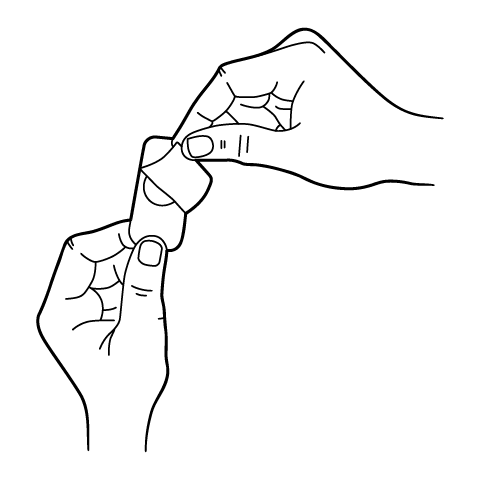
ODT and Troches Instructions
503A vs 503B
- 503A pharmacies compound products for specific patients whose prescriptions are sent by their healthcare provider.
- 503B outsourcing facilities compound products on a larger scale (bulk amounts) for healthcare providers to have on hand and administer to patients in their offices.
Frequently asked questions
Our team of experts has the answers you're looking for.
A clinical pharmacist cannot recommend a specific doctor. Because we are licensed in all 50 states*, we can accept prescriptions from many licensed prescribers if the prescription is written within their scope of practice and with a valid patient-practitioner relationship.
*Licensing is subject to change.
Each injectable IV product will have the osmolarity listed on the label located on the vial.

Given the vastness and uniqueness of individualized compounded formulations, it is impossible to list every potential compound we offer. To inquire if we currently carry or can compound your prescription, please fill out the form located on our Contact page or call us at (877) 562-8577.
We source all our medications and active pharmaceutical ingredients from FDA-registered suppliers and manufacturers.


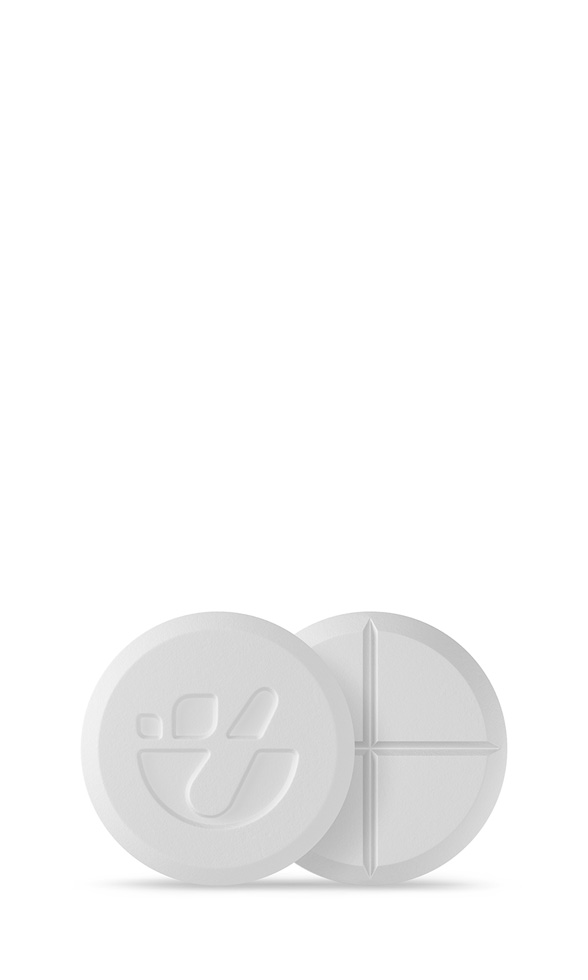 Sildenafil / Tadalafil ODT
Sildenafil / Tadalafil ODT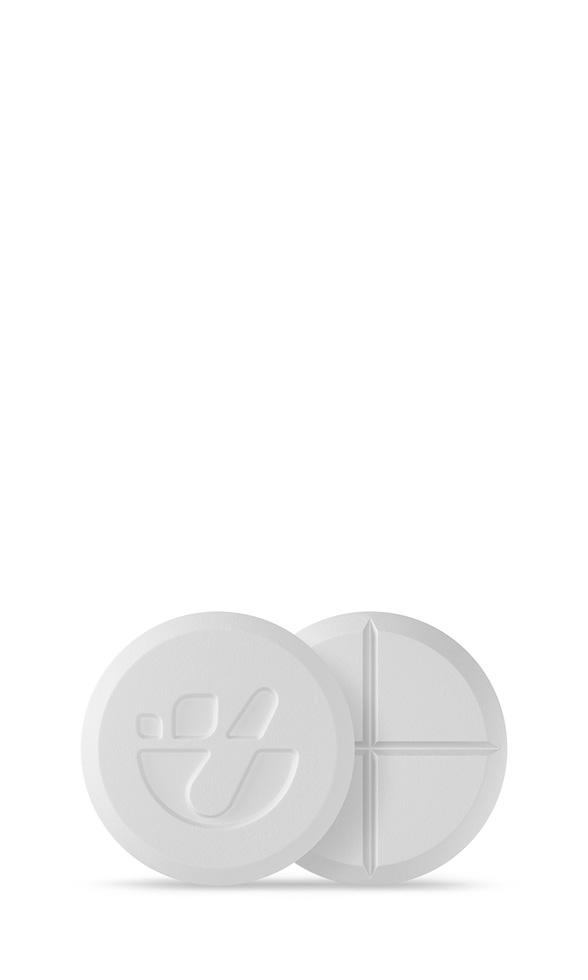 Sildenafil ODT
Sildenafil ODT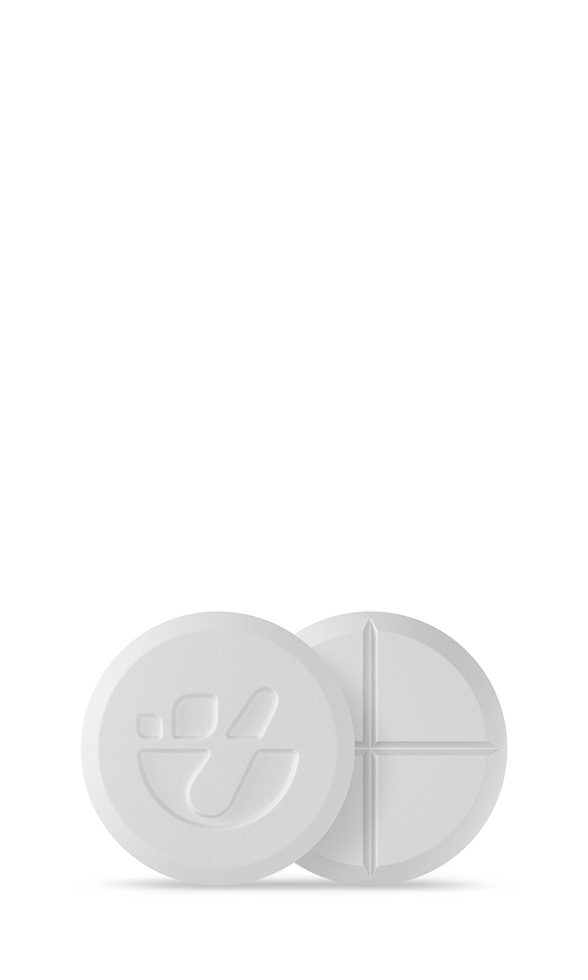 Sildenafil / Oxytocin ODT
Sildenafil / Oxytocin ODT Sildenafil / Apomorphine HCl Troches
Sildenafil / Apomorphine HCl Troches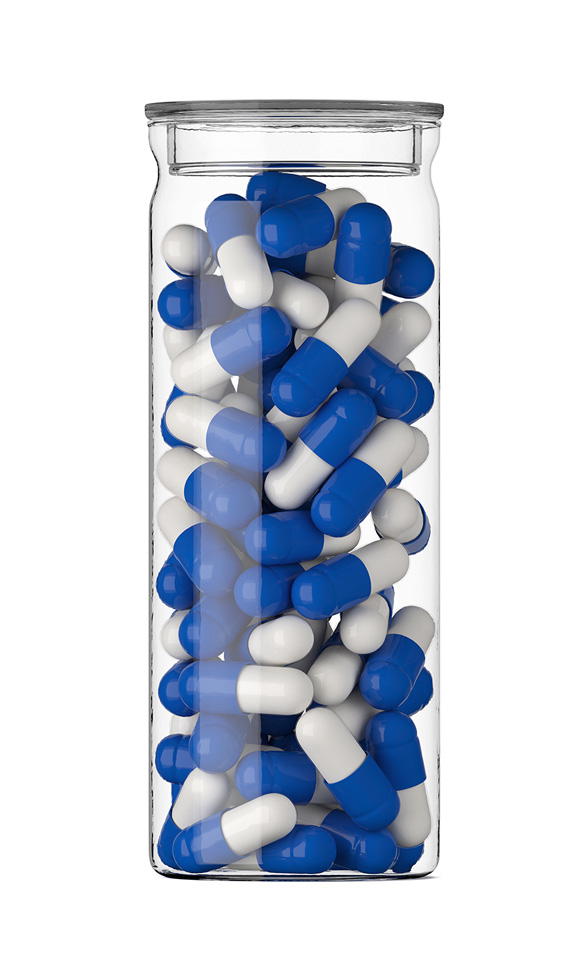 Enclomiphene Citrate Capsules
Enclomiphene Citrate Capsules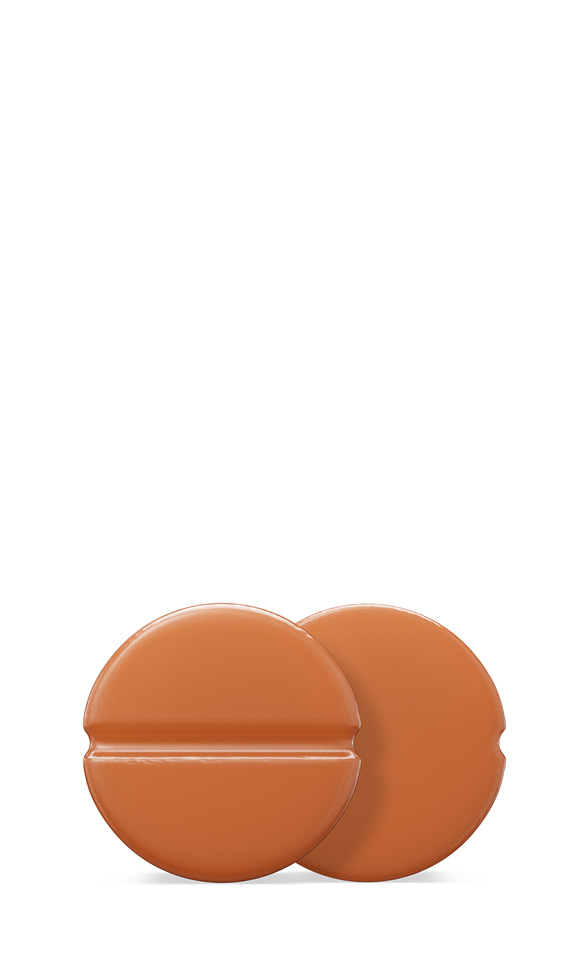 Tadalafil Troches
Tadalafil Troches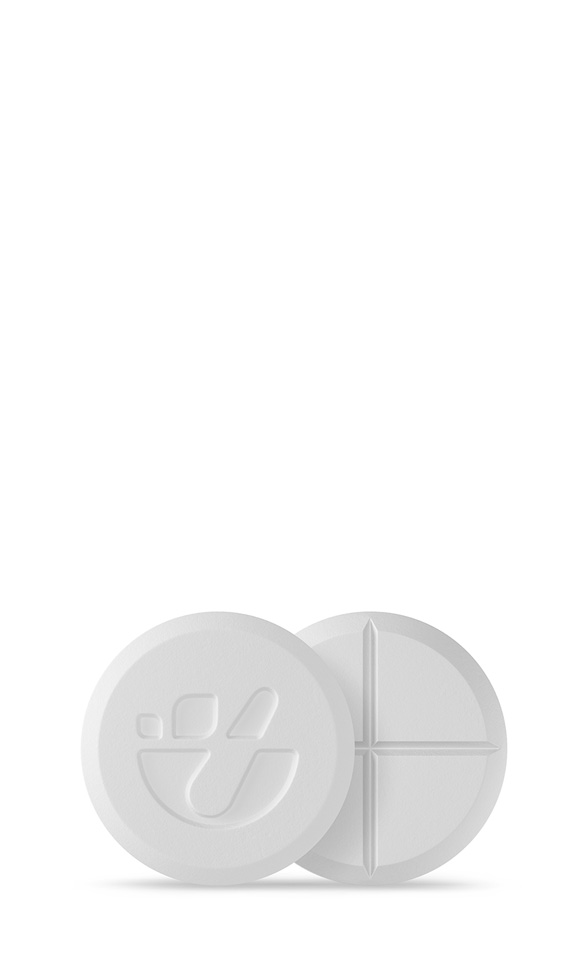 Tadalafil ODT
Tadalafil ODT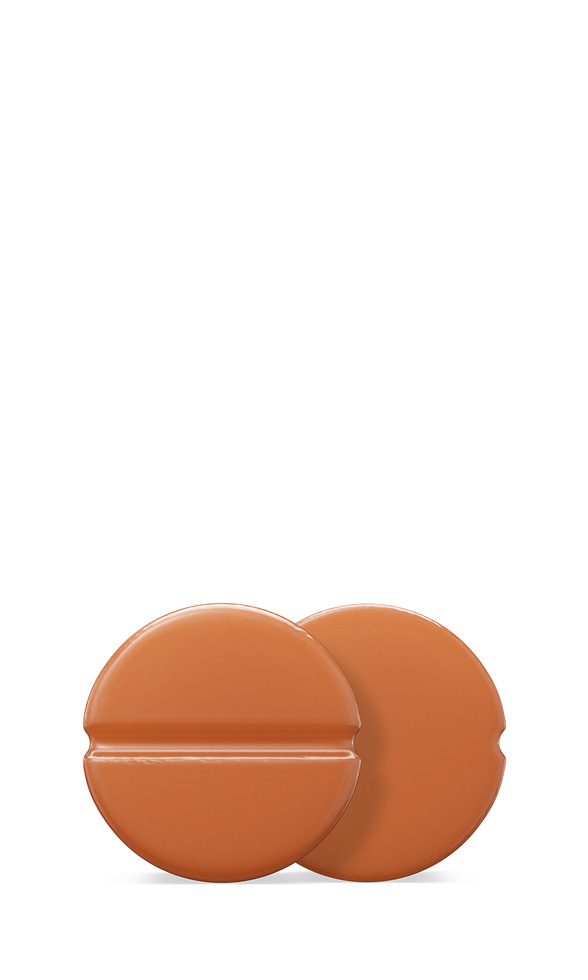 Tadalafil / Tramadol HCl Troches
Tadalafil / Tramadol HCl Troches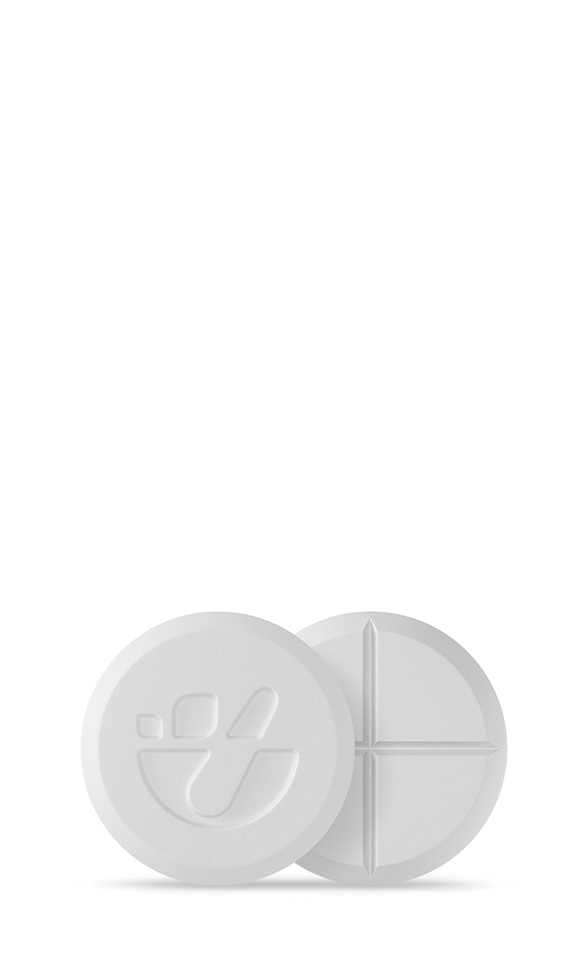 Tadalafil / Oxytocin ODT
Tadalafil / Oxytocin ODT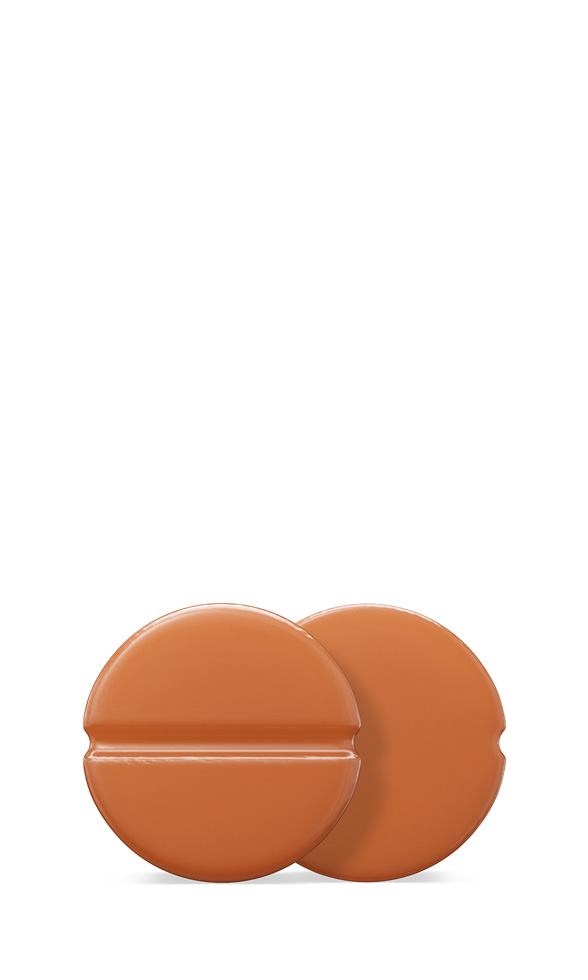 Tadalafil / Apomorphine HCl Troches
Tadalafil / Apomorphine HCl Troches